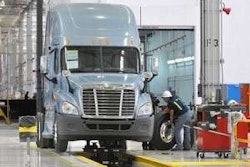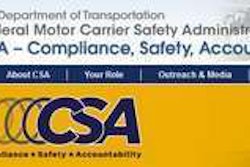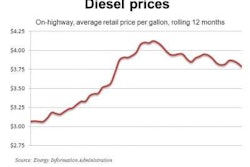Can you thrive in a weak economy?
Lack of drivers and trucks could keep good times going
On Sept. 21, the Federal Reserve’s Federal Open Market Committee noted the following situation: “Recent indicators point to continuing weakness in overall labor market conditions, and the unemployment rate remains elevated. Household spending has been increasing at only a modest pace in recent months despite some recovery in sales of motor vehicles as supply-chain disruptions eased. Investment in nonresidential structures is still weak, and the housing sector remains depressed.”
Not exactly “Happy Days Are Here Again.” No wonder the Dow Jones Industrial Average plunged 675 in the two trading days that followed.
Meanwhile, the trucking business is still pretty good.
How can that be? Freight volume isn’t bad, but neither is it going gangbusters. Based on the FTR Truck Loadings Index and the ATA For-Hire Truck Tonnage Index, year-over-year comparisons show healthy growth, but month-to-month changes have been choppy recently. So it’s fair to say that while freight is still better than a year ago and much better than two years ago, volume is not clearly on a growth trend.
The shortage might have to get worse to keep carriers healthy.
And yet, there are at least two other signs that trucking companies are healthy. First, fleets are buying trucks. Although net orders had not risen since April, they jumped 16.9 percent in August compared to July and 86.6 percent over August 2010, according to data from FTR Associates. And in Randall-Reilly’s monthly MarketPulse survey, 41 percent of carrier executives said that although they didn’t plan to grow their fleets in the next six months, they would be replacing aging equipment.

The other big sign of health in trucking is an inability to get enough drivers. The MarketPulse survey shows this to be the No. 1 issue since March (see page 29). It’s fascinating that trucking companies are facing a severe driver problem even though unemployment is more than 9 percent and payroll employment at for-hire carriers is still more than 170,000 jobs below the peak.
You could cite any number of reasons for the driver situation, from generous long-term unemployment benefits to lack of a pipeline of new drivers or to understaffed recruiting and human resource departments. But the biggest single problem seems to be that carriers have been forced to tighten their standards for hiring and retention. The Federal Motor Carrier Safety Administration’s Compliance Safety Accountability program is a big piece of the puzzle, but so are the Pre-Employment Screening Program and the move to electronic logging devices. And the challenge only will grow worse next year if new hours-of-service regulations put a dent in productivity.
If the U.S. economy slips back into a recession of the scale of 2008-2009, trucking will suffer like everyone else. But a severe driver shortage could ensure that capacity continues to lag demand even if freight softens significantly from current levels in the coming months.
AVERY VISE is executive director, trucking research and analysis for Randall-Reilly and senior editor, industry analysis for Commercial Carrier Journal. E-mail [email protected].












